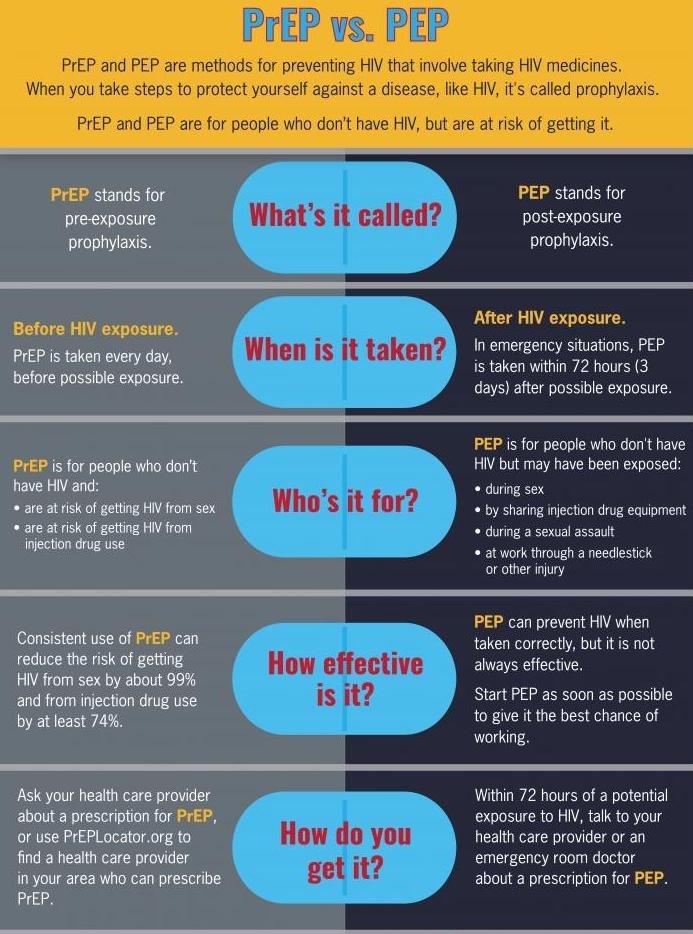GET INVOLVED. GET TESTED.
TIME TO STOP HIV & END THE STIGMA
What is PrEP?
PrEP stands for pre-exposure prophylaxis. The word “prophylaxis” means to prevent or control the spread of an infection or disease.
PrEP is when people who do not have HIV but are at risk of getting HIV take HIV medicine every day to prevent HIV infection. PrEP is used by people without HIV who are at risk of being exposed to HIV through sex or injection drug use.
If a person is exposed to HIV through sex or injection drug use, having the PrEP medicine in the bloodstream can stop HIV from taking hold and spreading throughout the body. However, if PrEP is not taken every day, there may not be enough medicine in the bloodstream to block the virus.
Who should consider taking PrEP?
PrEP is recommended that PrEP be considered for people who are HIV negative and who have had anal or vaginal sex in the past 6 months and:
- have a sexual partner with HIV (especially if the partner has an unknown or detectable viral load), or
- have not consistently used a condom, or
- have been diagnosed with a sexually transmitted disease (STD) in the past 6 months.
- have an injection partner with HIV, or
- share needles, syringes, or other equipment to inject drugs.
How well does PrEP work?
PrEP is most effective when taken consistently each day. CDC reports that studies on PrEP effectiveness have shown that consistent use of PrEP reduces the risk of getting HIV from sex by about 99% and from injection drug use by at least 74%. Adding other prevention methods, such as condom use, along with PrEP can further reduce a person’s risk of getting HIV.
Does PrEP cause side effects?
In some people, PrEP can cause side effects, such as nausea. These side effects are not serious and generally go away over time. If you are taking PrEP, tell your health care provider if you have any side effect that bothers you or that does not go away.
What happens once a person starts PrEP??
Once you start PrEP, you will need to take PrEP every day. PrEP is much less effective when it is not taken every day.
Continue to use condoms while taking PrEP. Even though daily PrEP can greatly reduce your risk of HIV, it does not protect against other STDs, such as gonorrhea and chlamydia. Combining condom use with PrEP will further reduce your risk of HIV, as well as protect you from other STDs.
You must also take an HIV test every 3 months while taking PrEP, so you will have regular follow-up visits with your health care provider. If you are having trouble taking PrEP every day or if you want to stop taking PrEP, talk to your health care provider.
What should a person do if they think that PrEP can help them?
If you think PrEP may be right for you, WhatsApp us right away by clicking the below button and our team will get in touch with to explain and guide next steps.
Be Aware! PrEP is NOT EQUAL to PEP?







Recent Comments